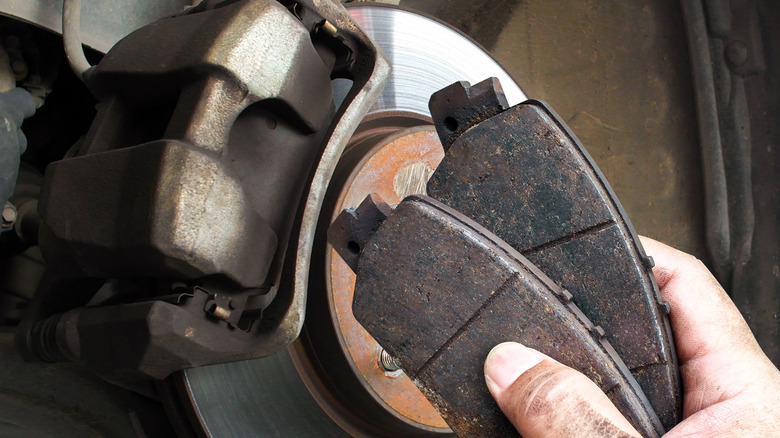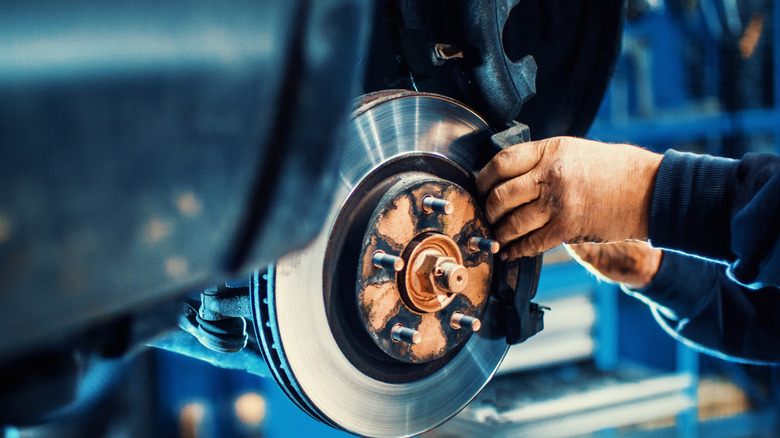Do You Really Need To Replace All 4 Sets Of Brake Pads At The Same Time?
If you want to keep your car in top shape, you need to keep up with your auto service requirements. Whether it's replacing the brake pads, changing the engine oil, or cleaning the air filters, these maintenance services can make a huge difference, not just for your car's performance and lifespan, but also for your wallet. Unfortunately, servicing your auto is not cheap. In fact, the average cost of repairing modern vehicles has skyrocketed over the past few years because cars have become more sophisticated. And this has prompted many drivers to try and stretch out their dollars by replacing what's absolutely necessary.
Brakes are arguably your car's most critical safety feature. Since basic brake maintenance can set you back a few hundred dollars, it can be easy to overlook the importance of servicing all four brake pads at the same time. After all, the front brakes usually do the most stopping in modern vehicles. This means that the front brake pads will wear out faster than the rear ones, and as long as one pair has plenty of life left, there is no need to replace it. Also, brake pads — especially ceramic pads — are quite expensive, and replacing all four pads simultaneously can leave a huge dent in your wallet.
However, while replacing the whole set at the same time isn't always necessary, there are times when replacing all four is a smarter move. It all depends on how evenly your brakes are wearing, your driving habits, and the lifespan of other axle pads. With that said, let's explore when you need and don't need to replace all four brake pads.
When should you replace all four brake pads?
One common maintenance mistake most car owners make is failing to swap all four brake pads once the pads exceed the threshold of three millimeters or, even worse, when your car starts to pull to one side after you hit the brakes. After all, that is a clear sign of uneven wear on the pads, and failure to address this issue can create devastating problems that might damage your rotors and calipers. Not only will this issue turn simple maintenance into costly repair, but it will also affect your car's braking performance. The solution? Replace all four brake pads simultaneously for better control and balanced braking performance.
Another scenario that might prompt you to replace all four brake pads is uneven pad damage. This commonly happens when one side of your car shows severe pad wear — mainly because of a warped rotor or a stuck caliper. If you notice this during a brake inspection service, replace all four pads. You'll avoid mismatched friction levels that can result in weird sounds, vibrations, or compromised stopping distances. You'll also want to swap all pads if you're replacing the rotors of more than one axle. This will also apply if you're equipping your car with new calipers, as it will help maintain optimal braking function. Plus, all pads will wear down evenly, reducing noise and vibration.
When you should not replace all four brake pads at once
As mentioned earlier, front brake pads usually wear out faster than rear pads. The reason is, once you press the brake pedal, your vehicle will lurch forward, increasing the load and demand of the front brakes. This means the car will shift naturally, and the front brakes will handle up to 70 percent of the stopping power. This will increase the wear and tear of the front brake pads, and at the same time, increase the lifespan of the rear pads nearly twice as long. So, unless there's significant wear on all pads, replacing only the worn-out set makes sense since you won't discard perfectly good pads. And not only will this help you save money, but you'll also stretch the lifespan of other braking components.
You also don't have to replace all four pads if you've engaged in a recent brake service, especially on one axle. For instance, if your recent brake service (say a few months ago) entailed the replacement of the rear brake pads, and they still look fine, it makes little sense to swap them again prematurely. The general rule of thumb is that brake pads should be replaced every 30,000 – 70,000 miles, depending on the driving conditions and habits. So, when your car shows signs of worn-out pads that need replacement (especially before they hit their mileage limit), conduct a basic brake inspection but focus more on pads near the wear limit.


